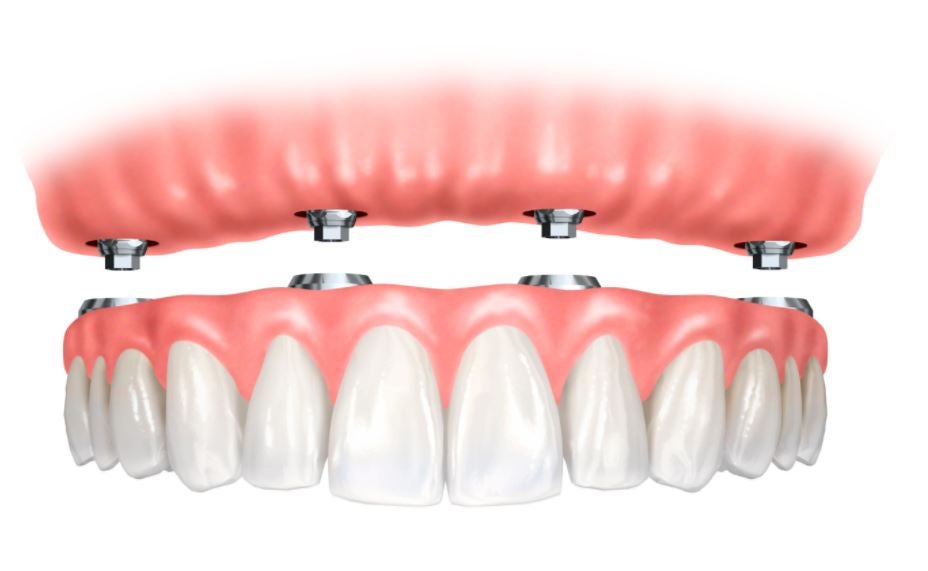What Does Dental Sense Mean?
What Does Dental Sense Mean?
Blog Article
The 5-Minute Rule for Dental Sense
Table of ContentsThe 2-Minute Rule for Dental SenseDental Sense Fundamentals ExplainedThe 9-Second Trick For Dental SenseGetting My Dental Sense To Work
are clinical devices surgically implanted into the jaw to restore an individual's ability to chew or their appearance. They give assistance for fabricated (fake) teeth, such as crowns, bridges, or dentures. When a tooth is shed due to injury or disease, an individual can experience complications such as fast bone loss, faulty speech, or modifications to chewing patterns that cause pain.Dental dental implant systems include a dental implant body and oral implant joint and may also include a joint addiction screw. Dental veneers cost. The dental implant body is operatively placed in the jawbone instead of the tooth's origin. The dental implant abutment is generally connected to the dental implant body by the abutment fixation screw and prolongs through gum tissues right into the mouth to support the connected synthetic teeth
(https://myspace.com/dentalsense1)Framework of The Oral Implant System selecting oral implants, talk with your oral company regarding the potential advantages and dangers, and whether you are a candidate for the procedure. Points to consider: Your overall health is an important consider identifying whether you are a good candidate for dental implants, just how long it will take to heal, and just how long the dental implant may remain in place.
Smoking cigarettes might influence the recovery process and lower the long-term success of the dental implant. The healing process for the implant body might take several months or longer, during which time you commonly have a short-term abutment in location of the tooth. the dental implant procedure: Thoroughly comply with the oral hygiene guidelines offered to you by your oral company.
Not known Incorrect Statements About Dental Sense
Implant failing can cause the demand for another surgery to fix or replace the dental implant system. Restores the capability to eat Brings back aesthetic appearance Assists keep the jawbone from reducing due to bone loss Protects the wellness of the bordering bone and gums Assists maintain nearby (close-by) teeth secure Boosts lifestyle Damages to bordering all-natural teeth throughout implant positioning Injury to the surrounding cells throughout surgery, such as sinus opening Injury throughout surgical treatment (as an example, crack of bordering jawbone) Inadequate function, such as seeming like the teeth do not bite together usually An experience that the tooth is loose or turning in area resulting from a joint screw loosening up Implant body failing (looseness of the dental implant body) due to systemic infection, which may be most likely in clients with uncontrolled diabetes mellitus as a result of regional infection in bone and periodontals supporting the implant body due to delayed healing, which may be most likely in individuals who smoke Difficulty cleaning the gums around the dental implant, causing inadequate dental health Without treatment periodontal disease Post-surgical pins and needles as a result of nerve impingement or damages Constantly notify healthcare providers and imaging technicians that you have oral implants prior to any magnetic vibration imaging (MRI) or x-ray treatments.
FDA is not knowledgeable about any damaging occasions reported for MRI or x-ray procedures with oral implants. Oral implants systems are commonly constructed from materials that comply with international agreement criteria of the International Organization for Standardization (ISO) or ASTM International. These standards have details of what makes a secure product.

A dental implant is a framework that replaces a missing out on tooth. With screw-like devices, the surgeon inserts an implant right into the jawbone, and it acts as a support for an artificial tooth, called a crown.
About Dental Sense
Some people are not eligible for oral implant surgical procedure. It is for oral doctors to operate individuals with: acute illnessuncontrollable metabolic diseasebone or soft tissue disease or infectionIf these issues are resolved, an individual can have the surgical procedure. In, oral doctors abstain from operating on individuals with: If individuals with any of the above undertake oral implant surgical treatment, there is a greater danger of the implant falling short.

Dental dental implant surgery is an individualized procedure. It's not the exact same for every person. The following provides a basic review of what you can expect your dental professional, oral cosmetic surgeon, periodontist or prosthodontist to do: Put the dental implant operatively. Give you time to recover. Affix the blog post and last crown, bridge or denture.
Next, your cosmetic surgeon will meticulously place the oral implant right into your jaw. If your dental implant is near the front of your mouth, your dental expert will certainly make a momentary tooth for you to wear till you heal.
How Dental Sense can Save You Time, Stress, and Money.
During the healing phase, your jawbone ought to fuse to the oral implant. This process can take anywhere from 3 to 9 months.
Once your implant heals, your dental expert image source can attach the joint (tiny adapter post) and your final remediation (crown, bridge or denture). This typically takes about one hour to finish and may need a 2nd minor surgical treatment. You should not feel any pain during your oral implant procedure since your provider will make use of medication to numb your gum tissues.
Report this page